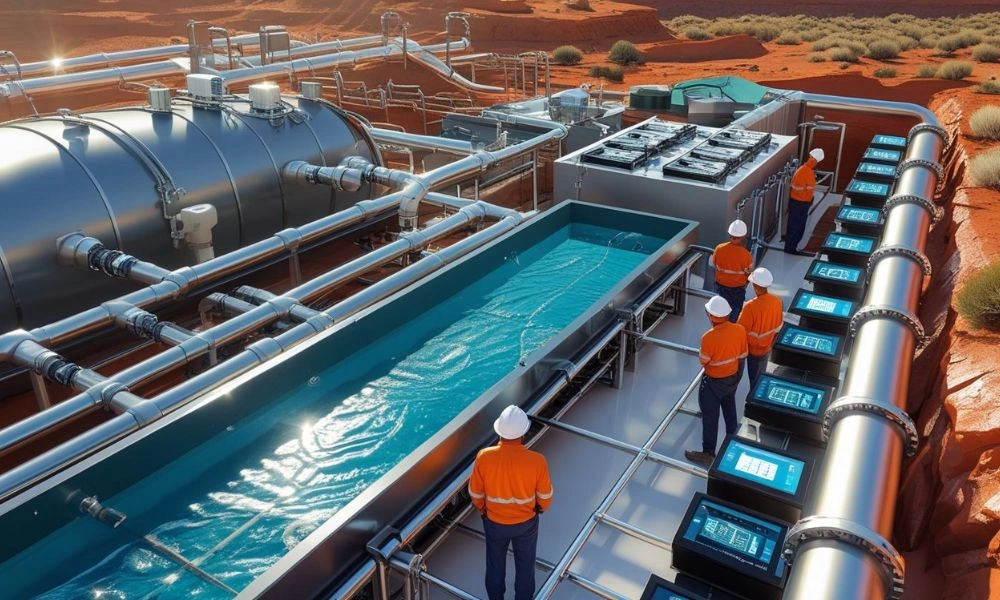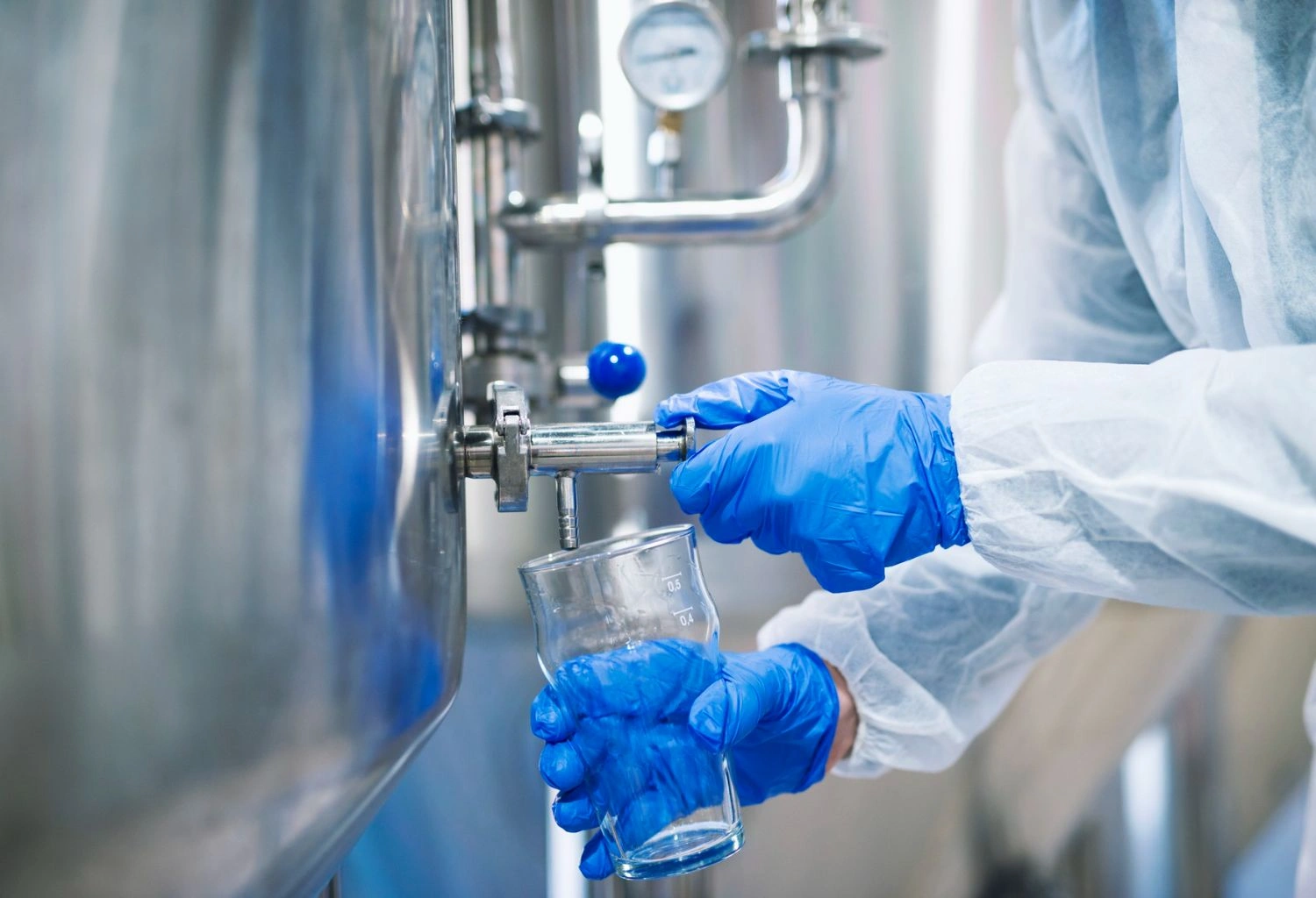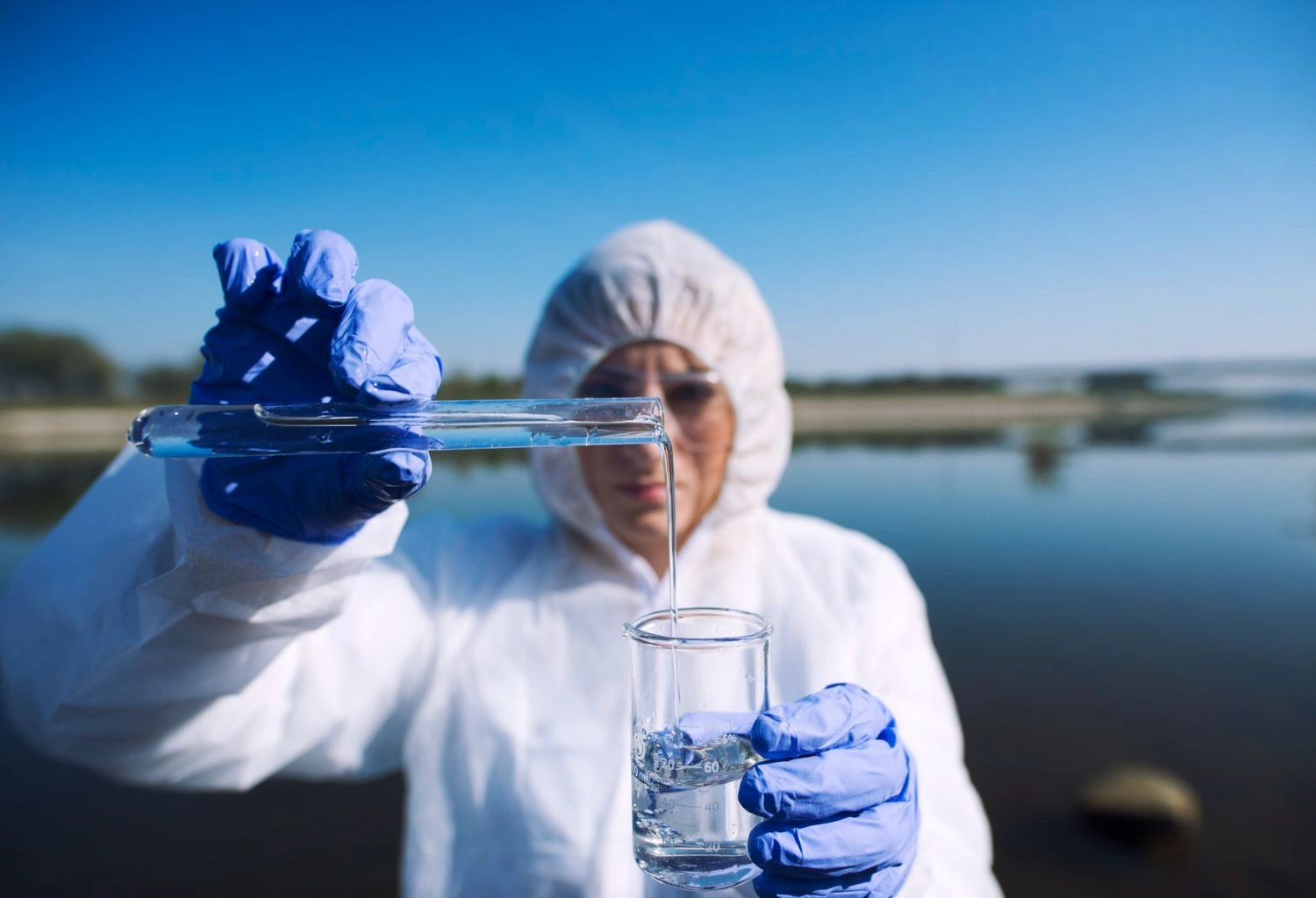PGM mine sustainability focuses on reducing water use through smart recycling, advanced treatment, and local adaptation. Closed-loop systems, greywater recovery, and tailings water reuse minimize environmental impact and lower costs. With reliable partners like WCSP providing scalable solutions, mines can now meet environmental demands while maintaining productivity and protecting natural water resources.
Ultra-filtration Water Plant
Why PGM Mine Sustainability Matters Globally?
Platinum Group Metal (PGM) mining is a key driver of todays industries such as automotive, electronics, and healthcare. Despite this, its footprint on the environment, particularly water consumption, is such a significant concern that sustainability becomes a top priority. Conventional mining of PGMs uses enormous volumes of freshwater in areas that are already under water stress. Consequently, PGM mine sustainability now revolves mostly around water conservation, recycling, and adjustment to the environment.
How Water Recycling Is Done in PGM Mining?
Water is needed at every stage of the mining process—at separating the ores and dust control through to transporting tailings. Much of this water was dumped after use in traditional methods. However, present-day mines employ intelligent water recycling technology to minimize water loss and environmental degradation.
Primary Water Recycling Strategies:
- Closed-loop systems: Tightly cycle and recycle water in the mine, releasing little waste.
- Tailings water recovery: Recover water from waste materials such as slurry and reuse it.
- Rainwater harvesting: Harvest rain in storage tanks to sustain operations in dry periods.
- Greywater filtration: Filter lightly used water (e.g., from washing or rinsing) for non-potable use.
These practices minimize freshwater demand, manage pollution, and assist with regulation compliance.
Benefits of Smart Water Recycling in Mining
Water recycling isn’t just green—it’s good for business, too.
Key Advantages:
- Reduces dependence on freshwater resources
- Decreases pollution and effluent discharge into the environment
- Reduces long-term water sourcing costs
- Complies with national and international environmental regulations
- Wins goodwill from neighboring communities
By conserving water effectively, mines become sustainable, productive, and appreciated.
Water Quality Monitoring
Technologies That Facilitate Sustainable Water Consumption
To aid sustainable mining, sophisticated technologies treat and recycle water and minimize contamination.
Emerging Technologies Include:
1. Filtration Systems
Utilized to filter out suspended solids and contaminants prior to reusing water.
2. Advanced Oxidation Processes (AOP)
Use ozone or hydrogen peroxide to disintegrate harmful pollutants at the molecular level.
3. Membrane Filtration
High-efficiency filters—like nanofiltration and ultrafiltration—recover clean, usable water.
4. Dewatering Systems
Remove water from tailings, assisting in reclamation and reuse in operations.
5. Smart Monitoring Tools
Sensors monitor water quality, flow, and consumption real-time to maintain compliance and optimize.
These technologies enhance water efficiency and allow mining operations to adjust to changing water availability.
Adaptation Measures for Water-Stressed Regions
Mining firms in arid or drought-stricken areas have to look beyond recycling—they need to adapt.
Effective Adaptation Strategies:
- Constructing seasonal water reservoirs
- Synchronizing operations with times of water surpluses
- Collaborating with host communities for mutual sharing of resources
- Developing climate-sensitive flexible water plans
- Embedding water risk in business choices
Such measures keep mines operational and accountable even during water-stressed scenarios.
Pros and Cons of Water Recycling in PGM Mining
| Feature | Pros | Cons |
|---|---|---|
| Water Recycling Efficiency | Reduces water demand and discharge | High initial cost for treatment infrastructure |
| Environmental Compliance | Meets sustainability standards | Requires technical staff for system management |
| Operational Cost Over Time | Long-term savings on water procurement | Regular maintenance and monitoring needed |
| Community & Social Impact | Enhances public image and trust | Mismanagement may cause local resistance |
How WCSP Supports PGM Mine Sustainability
Water Care Services Pakistan (WCSP) is a well-reputed name for water and wastewater treatment. WCSP provides efficient, scalable solutions for the mining industry with its experience in industrial and environmental fields.
WCSP offers:
- Bioremediation Systems: Natural processes for extracting organic waste from water.
- Electrocoagulation and AOP: Efficient degradation and separation of contaminants.
- Tailings Water Treatment Units: Modular units for recycling water from mine waste.
- Energy-Efficient Equipment: Power saving and low maintenance design.
- Total Project Support: From design to installation to post-sales service and training.
Their eco-friendly, low-maintenance technologies are optimally suited for new as well as old mining locations in regions with water scarcity.
Conclusion:
PGM mine sustainability is not longer a choice. Intelligent water recycling and strategic adjustment safeguard the environment as well as long-term profitability for the mine. With technologies such as filtration, advanced oxidation, and real-time monitoring, mining processes shave dollars from their budgets, increase efficiency, and become more socially responsible. With providers like WCSP, sustainable mining is not only possible—it’s profitable and viable.
Frequently Asked Questions (FAQs)
1. Why is PGM mine sustainability a global priority?
Platinum Group Metal (PGM) mining consumes large volumes of freshwater, often in water-scarce areas. Sustainability is vital to reduce environmental damage and preserve water resources.
2. How is water used in PGM mining operations?
Water is used for ore separation, dust suppression, tailings transport, and equipment washing—making it critical to the entire mining process.
3. What is smart water recycling in mining?
Smart water recycling involves reusing treated process water through closed-loop systems, tailings recovery, greywater treatment, and rainwater harvesting to minimize freshwater usage.
4. What are the benefits of recycling water in PGM mining?
Key benefits include reduced freshwater dependency, lower costs, less environmental pollution, improved compliance with regulations, and better community relationships.
5. What technologies support sustainable water use in mines?
Technologies include advanced filtration systems, membrane filtration, AOP (Advanced Oxidation Processes), dewatering units, and smart monitoring sensors for real-time optimization.
6. What is membrane filtration and how does it help?
Membrane filtration uses nanofiltration or ultrafiltration to recover clean water from contaminated sources, making it reusable in mining operations.
7. How do PGM mines adapt in water-stressed areas?
Mines adapt by building reservoirs, aligning work with rainy seasons, sharing water with communities, and developing flexible, climate-aware water management strategies.
8. What are the main challenges of water recycling in mining?
Challenges include high upfront costs for technology, the need for skilled operators, ongoing maintenance, and potential resistance if not properly managed.
9. How does WCSP support sustainable mining operations?
WCSP provides bioremediation, electrocoagulation, AOP systems, and full project support—including design, setup, and maintenance—to help mines manage water efficiently.
10. Why should mining companies invest in water sustainability?
It ensures long-term operational viability, reduces environmental risk, lowers costs over time, and strengthens social license to operate in local communities.



